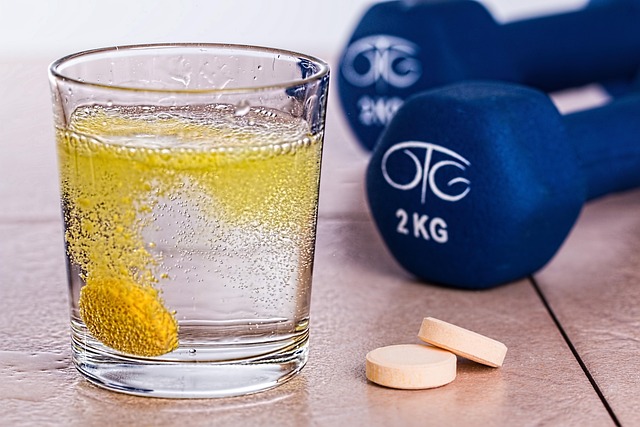Joint health is paramount for overall well-being, especially as individuals age or engage in physical activities. Proper nutrition supports joint function and healing, with omega-3 fatty acids, proteins, vitamins, and minerals strengthening bones, cartilage, ligaments, and tendons. PRP therapy for joints, a groundbreaking approach using platelet-rich plasma derived from a patient's blood, accelerates healing by stimulating cellular activity and collagen production. A holistic approach to joint health includes regular exercise, balanced diet with anti-inflammatory foods (like omega-3s, turmeric, ginger), minimizing processed sugars, adequate hydration, and sleep; these strategies, combined with PRP therapy for joints, optimize natural healing processes.
“Unleash the power of nutrition to nurture and heal your joints! This comprehensive guide explores effective strategies to support joint health, focusing on the transformative potential of PRP therapy and targeted dietary choices. Discover how specific nutrients play a pivotal role in optimizing joint function and mobility.
From understanding the fundamentals of joint health to implementing lifestyle changes, we’ll delve into practical tips for long-term joint care. Learn why PRP therapy emerges as a cutting-edge approach, offering a natural path to regeneration and reduced pain. Embrace these strategies for a healthier, more vibrant you.”
- Understanding Joint Health and the Role of Nutrition
- PRP Therapy: An Innovative Approach to Joint Healing
- Essential Nutrients for Optimizing Joint Function
- Lifestyle Changes and Dietary Recommendations for Long-Term Support
Understanding Joint Health and the Role of Nutrition

Joint health is a fundamental aspect of overall well-being, especially as we age or engage in physically demanding activities. Understanding how nutrition supports joint function and healing is crucial for maintaining mobility and quality of life. The body’s joints are complex structures composed of bone ends, cartilage, ligaments, and tendons, each playing a vital role in allowing movement and bearing weight.
Proper nutrition is key to keeping these structures healthy. For instance, foods rich in omega-3 fatty acids, such as fish and flaxseeds, have anti-inflammatory properties that can help reduce joint pain and swelling. Additionally, proteins are essential for tissue repair, while vitamins and minerals like vitamin C, D, and calcium contribute to bone health and overall joint stability. Even advanced treatments like PRP therapy for joints often begin with a solid nutritional foundation to optimize the body’s healing mechanisms.
PRP Therapy: An Innovative Approach to Joint Healing

PRP therapy for joints represents an innovative approach to joint healing and has gained significant attention in recent years. Platelet-rich plasma (PRP) is a natural substance derived from the patient’s own blood, containing a high concentration of growth factors and stem cells. These components play a crucial role in promoting tissue repair and regeneration. When injected into damaged joints, PRP accelerates the body’s natural healing process by stimulating cellular activity and encouraging collagen production.
This therapy has shown promising results in treating various joint conditions, including arthritis, tendon injuries, and ligament sprains. By harnessing the body’s own healing mechanisms, PRP offers a minimally invasive alternative to traditional surgical interventions. Its effectiveness lies in its ability to target specific areas of damage, providing targeted nutrition and support for optimal joint health and healing.
Essential Nutrients for Optimizing Joint Function

Joint health and healing require a strategic approach, and nutrition plays a pivotal role in this process. Among the many essential nutrients, certain key players stand out for their ability to optimize joint function. One such strategy gaining traction is Platelet-Rich Plasma (PRP) therapy, which involves injecting concentrated platelets into affected areas to stimulate healing and reduce inflammation. However, dietary interventions should complement these treatments for optimal results.
Omega-3 fatty acids, found in fish like salmon and sardines, are renowned for their anti-inflammatory properties, making them a cornerstone of any joint health regimen. Additionally, collagen, the primary structural protein in connective tissues, is crucial for building and maintaining healthy joints. Foods rich in vitamin C and zinc, such as citrus fruits and oysters, support collagen synthesis. Other essential nutrients include glucosamine, which aids in cartilage repair, and manganese, a mineral that contributes to bone health and joint mobility.
Lifestyle Changes and Dietary Recommendations for Long-Term Support

Adopting a holistic approach to joint health involves lifestyle changes and dietary recommendations that support long-term healing. Regular exercise, including low-impact activities like swimming or yoga, helps strengthen muscles around joints, improve flexibility, and maintain a healthy weight, all of which contribute to reduced strain on articular structures. Additionally, managing inflammation through a balanced diet rich in anti-inflammatory foods such as omega-3 fatty acids, turmeric, and ginger can be beneficial. These dietary changes complement treatments like PRP therapy for joints by optimizing the body’s natural healing processes.
For sustained results, focus on incorporating nutrient-dense whole foods into your diet. Reducing processed sugars and refined carbohydrates can help minimize chronic inflammation. Including a variety of fruits, vegetables, lean proteins, and healthy fats ensures your body receives essential vitamins, minerals, and antioxidants necessary for joint repair and maintenance. Staying hydrated and prioritizing adequate sleep further support the body’s natural healing mechanisms, ensuring optimal joint health over time.
In conclusion, maintaining optimal joint health involves a multifaceted approach, from understanding the fundamental role of nutrition to adopting innovative therapies like PRP treatment and making sustainable lifestyle changes. By focusing on essential nutrients and dietary recommendations, individuals can support their joint function and promote healing over time. Incorporating PRP therapy for joints further enhances recovery, making it a promising game-changer in managing joint-related issues.
